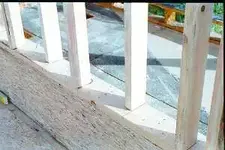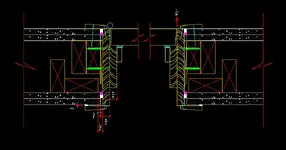I
Ibrow
New member
Hey,
I am building a wall to separate a large room into a small room and a bedroom. The wall will divide the room, have a door, and both sides of the wall will be used and need to look nice. Most importantly, I want as little noise as possible to go from one side to the other. Simple enough, eh? Some questions.
I was planning on building with 2x4's. Will that be good enough to build a "quiet" wall? Should I double-sheetrock both sides? Also, what should I fill the gap between joists up with? Fiberglass insulation(R-13, R-19 etc.?)? Styrofoam? MDF? I read a few posts about rigid fiberglass. Would that be advisable? If so, where should I put it, and where can I buy it?
Finally, the door will most likely be the biggest sound leak. What type of door would you suggest? The room is a substandard height, so I will most likely have to cut the door, and jambs, at the bottom to fit it. In that case, should I get some kind of cheap hollow door and fill it up with something or other?
Thanks for any advice. I really don't know where else to go with these questions.
I am building a wall to separate a large room into a small room and a bedroom. The wall will divide the room, have a door, and both sides of the wall will be used and need to look nice. Most importantly, I want as little noise as possible to go from one side to the other. Simple enough, eh? Some questions.
I was planning on building with 2x4's. Will that be good enough to build a "quiet" wall? Should I double-sheetrock both sides? Also, what should I fill the gap between joists up with? Fiberglass insulation(R-13, R-19 etc.?)? Styrofoam? MDF? I read a few posts about rigid fiberglass. Would that be advisable? If so, where should I put it, and where can I buy it?
Finally, the door will most likely be the biggest sound leak. What type of door would you suggest? The room is a substandard height, so I will most likely have to cut the door, and jambs, at the bottom to fit it. In that case, should I get some kind of cheap hollow door and fill it up with something or other?
Thanks for any advice. I really don't know where else to go with these questions.


 )
) (except by Rod maybe
(except by Rod maybe  )
)

 )
)

